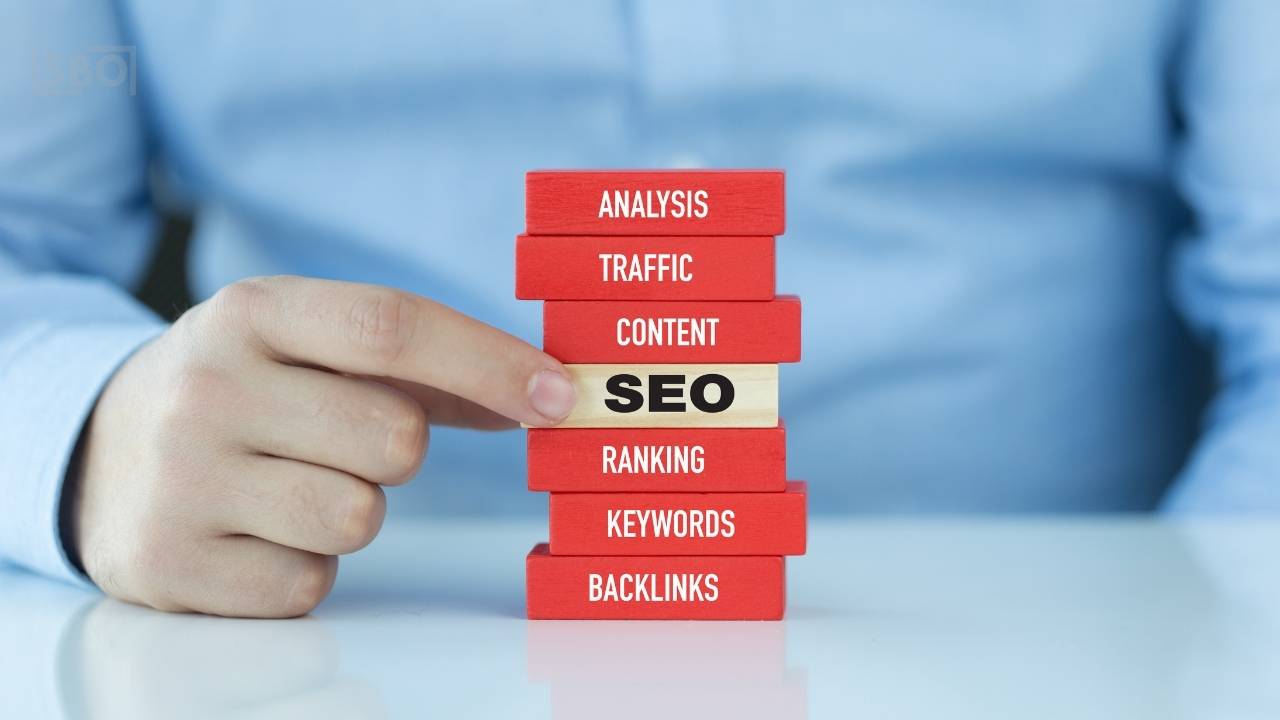Whether you’re new to website design or looking to enhance your existing skills, this guide promises valuable insights that can help you navigate the landscape of budget-friendly website design in 2024.
In the digital age of 2024, having a well-designed and affordable website has become an essential part of any successful business strategy. Whether you run a small local company or a global enterprise, your online presence can significantly impact your brand’s visibility, reputation, and growth.
Why is a well-designed website so critical?
A well-crafted website can help you effectively communicate with your customers, display your products or services, and ultimately drive conversions. However, creating such a website doesn’t necessarily mean breaking the bank. With the right knowledge and tools, designing a budget-friendly website is indeed possible.
What does this article offer?
This comprehensive guide will delve into various aspects of budget-friendly website design. We’ll explore everything from understanding the purpose of your site to selecting the right platform that fits within your budget. We’ll also discuss key considerations for creating an engaging and user-friendly site while ensuring optimal SEO performance.

Understanding Website Design
Website design is more than just creating something that looks good. It’s a strategic process that requires careful thinking and planning.
Defining the Purpose and Goals of Your Website
The first step in any design process is to define your website’s purpose and goals clearly. You need to know what you want your site to do, whether it’s making people aware of your brand, selling products, or providing helpful information. Each page should have a specific purpose that helps you reach your overall goals. For example, if you have an online clothing store, your home page might focus on showcasing new collections, while product pages are designed to encourage sales.
Selecting the Right Website Platform for Your Budget-Friendly Design
Choosing the right website platform is essential when working with a limited budget. There are many options available, each with its strengths and weaknesses. Here are a few popular ones:
-
WordPress: Known for its flexibility and wide range of free themes and plugins.
-
Wix: Offers an easy-to-use design interface.
-
Shopify: Great for running an online store.
Remember to consider both your website’s goals and your technical abilities when making this decision.
Gathering and Incorporating Key Brand Elements into Your Website
Your website should visually represent your brand and its personality through key brand elements. These can include your logo, colour scheme, fonts, and other visual elements associated with your brand. Using these consistently across all pages helps people easily recognize and trust your brand. For example, if you’re a local bakery with a cozy, rustic vibe in your physical stores, carrying that same feeling onto your website can create a seamless experience for online visitors.
This is just the beginning of understanding website design. The next section will explore specific tips and strategies for creating a budget-friendly website.
Key Considerations for Budget-Friendly Website Design in 2024
Choosing an Effective Website Template or Theme for a Polished Look
Starting with a professional website template or theme can be a great way to save on costs while achieving a polished look. An array of templates are available today, catering to various business types and styles. Some platforms offer free templates, while others charge a small fee for premium options. Consider layout, colour scheme, typography, and responsiveness when selecting your template. Remember that the suitable theme should align with your brand identity and appeal to your target audience.
Structuring Your Site Architecture to Enhance User Navigation
The structure of your site architecture is pivotal in determining how easily users can navigate your website. Think about the user journey from the moment they land on your site to the point they achieve their goal (making a purchase, signing up for a newsletter, contacting you). A well-structured website should guide visitors effortlessly through this process. Implement a logical hierarchy with clear categories and subcategories. Keep menu labels straightforward and intuitive.
Designing Engaging and User-Friendly Web Pages on a Budget
Creating engaging web pages doesn’t necessarily require big bucks. Here are some budget-friendly tips:
-
Use high-quality images: Royalty-free stock photos, custom illustrations, or professionally taken photographs.
-
Implement clean design principles: Keep elements aligned, use consistent spacing, and don’t overload pages with too much information.
-
Incorporate interactive elements: These could include surveys or quizzes, comment sections, or social media share buttons. Remember that every element on your webpage should serve a purpose and contribute to a unified user experience.
Optimizing Web Pages for Better User Experience and SEO Performance
Optimization is crucial in enhancing user experience (UX) and search engine optimization (SEO). For an improved UX, ensure your web pages load quickly, are mobile-friendly and easy to navigate. Use relevant keywords in your content, meta descriptions, and image alt tags for SEO. Regularly audit your website to identify any broken links or 404 errors and fix them promptly.
By paying attention to these critical considerations, you can create a budget-friendly website that is aesthetically pleasing, user-friendly, and optimized for search engines.
Testing, Launching, and Optimizing on a Budget
Embarking on a journey to test and launch your website is an exciting phase. However, overlooking the crucial step of testing could lead to unnecessary hiccups. Ensuring your site’s functionality before its public debut is vital. This involves checking for broken links, ensuring every page loads correctly, confirming all forms are working, and validating that it displays well across various devices and browsers. For those on a budget, several free tools are available, such as Google’s Mobile-Friendly Test or W3C’s Markup Validation Service, which can assist in this process.
Launching your website doesn’t have to be an expensive affair. Here are a few tips for a successful website launch on a limited budget:
-
Plan Your Launch: Identify your target audience, define your marketing goals, and develop a promotion strategy.
-
Leverage Social Media: Share your new website with potential customers using platforms like Facebook, Twitter, or LinkedIn.
-
Email Marketing: Announce the launch through an email campaign if you have a mailing list.
-
Ask for Feedback: Encourage visitors to provide feedback about their experience navigating your site.
The third pillar of this section is optimizing content – which is vital for user experience and SEO performance. However, this does not necessarily require a hefty investment. Here are some cost-effective strategies:
-
Keyword Research: Use free tools like Google Keyword Planner to identify relevant keywords for your content.
-
Create Quality Content: Ensure the content is engaging, functional, and valuable to your audience.
-
On-page SEO: Include meta tags, header tags and alt text in images.
-
Link Building: Internal linking helps users easily navigate your site, while external backlinks improve your SEO ranking.
By adopting these practices, you can ensure that your website is set up for success from the start, even with a tight budget.
Essential Tools for Budget-Friendly Website Design
Creating a professional-looking website doesn’t have to empty your wallet, thanks to various free or low-cost tools available today. These resources are incredibly beneficial for small business owners and entrepreneurs looking to design a website while staying on budget.
Free or Affordable Tools to Aid in Your Design Process
Canva
It offers intuitive design tools and templates for creating web graphics. A free version is available, with an option to upgrade for more features.
GIMP or Paint.NET These are free alternatives to Photoshop; they provide robust image editing capabilities.
Google Fonts
An extensive library of free fonts that can enhance the visual appeal of your site.
Bootstrap
A free front-end framework for developing responsive websites.
WordPress.org
While hosting and domain names come at a cost, the WordPress software is free, providing an extensive range of themes and plugins.
These tools help in designing visually compelling elements and ensure that your site’s functionality aligns with modern standards without straining your finances.

How to Leverage SEO Tools for Cost-Effective Optimization
Search Engine Optimization (SEO) is critical for ensuring your website ranks well on search engines and reaches your target audience. Incorporating SEO tools for website design is a step you can’t afford to skip.
Google Analytics
Tracks website traffic and user behaviour insights. It’s essential for understanding how visitors interact with your site.
Yoast SEO (for WordPress users)
This plugin streamlines the process of optimizing your content and meta tags. It offers both free and premium versions tailored to different needs.
Ubersuggest
A comprehensive tool for keyword research and competitive analysis. It has a free tier with valuable insights into SEO strategy.
MozBar
A browser extension that allows you to assess the SEO strength of any given page instantly.
By leveraging these SEO tools, you can fine-tune your content, strategically use keywords, optimize meta descriptions, and more—all leading towards better visibility online. Hence, it’s important not only to design a website but also to incorporate strong SEO foundations from the outset.
Considering the Alternatives: DIY vs. Hiring a Web Designer
When it comes to creating a website, one of the first decisions you’ll face is whether to embark on a DIY website design journey or to hire a professional web designer. Both options have their advantages and disadvantages, and understanding them can help you make an informed choice that fits your goals and budget.
Pros and Cons of Designing Your Own Website on a Budget
DIY Website Design
Pros:
-
Cost Savings: Typically, DIY website design is less expensive than hiring a professional. Many platforms offer free templates and hosting services.
-
Full Control: You have complete creative control to ensure your website reflects your style or brand identity.
-
Learning Experience: Building your website can be a valuable learning experience, providing skills that could benefit future projects.
Cons:
-
Time Investment: Learning the necessary tools and technologies may take significant time.
-
Limited Expertise: Without professional experience, the final product may not meet the same quality standards as an experienced designer’s.
-
Potential for Errors: Beginners might overlook important design principles or SEO best practices, which could impact user experience and discoverability.
When to Invest in Professional Web Design Services
Hiring a Web Designer
Pros:
-
Professional Quality: A web designer brings expertise in user experience (UX), graphic design, and SEO.
-
Efficiency: With experience comes speed. A professional can often deliver a polished website faster than a novice.
Post-Launch Support: Many web designers offer ongoing support, helping you troubleshoot issues or update content.
Cons:
-
Higher Cost: A web designer’s expertise comes at a price that may be above the budget for some startups or small businesses.
-
-
Less Control: You may need to compromise on certain aspects if they don’t align with best practices or the designer’s perspective.
-
Dependence: Relying on someone else for updates and changes can lead to delays or further costs.
Deciding between DIY website design and hiring a web designer depends on various factors including time constraints, budget limits, technical proficiency, and the level of customization required. If you’re running on tight financial reins yet possess some technical know-how, taking the DIY route could be beneficial. On the flip side, if you’re looking for a highly professional site that stands out in a competitive market, investing in expert services might yield better returns in the long run.
Conclusion
Navigating the world of web design in 2024 requires savvy and cost-effective strategies to stay competitive without breaking the bank. Embracing budget-friendly approaches is critical to achieving an effective online presence. You set a solid foundation by understanding your website’s purpose, choosing the right platform, and incorporating brand elements.
Optimizing your site structure, page designs, and SEO performance can increase user engagement and visibility. Testing before launch and continuous optimization are essential to ensure your site’s functionality and success.
While DIY offers some benefits, professional web design services can provide expert insights and resources worth investing in when the time is right. Now that you have this knowledge, you can take on web design like a pro!
Remember, Small Biz Optimize is here to help! We offer affordable, professional web design solutions tailored to your needs. Need help with your web design project? Don’t hesitate to check us out! Let’s create something great together.
FAQs (Frequently Asked Questions)
What is the importance of a well-designed and affordable website in 2024?
The importance of a well-designed and affordable website in 2024 lies in its ability to attract and retain customers, establish brand credibility, and drive business growth. With the increasing reliance on digital platforms, having a professional and budget-friendly website is crucial for small businesses to compete effectively.
How can I define the purpose and goals of my website?
Defining the purpose and goals of your website involves identifying the primary function it will serve and outlining specific objectives such as generating leads, promoting products or services, providing information, or facilitating online transactions. This clarity will guide the design and content creation process.
What are some key considerations for budget-friendly website design in 2024?
Key considerations for budget-friendly website design in 2024 include selecting an effective website template or theme, structuring site architecture to enhance user navigation, designing engaging web pages on a budget, and optimizing web pages for better user experience and SEO performance.
Why is testing your website before launching important?
Testing your website before launching is crucial to ensure its functionality across different devices and browsers. It helps identify and rectify any issues related to usability, performance, or security, ultimately contributing to a positive user experience.
What are some essential tools for budget-friendly website design?
Essential tools for budget-friendly website design include free or affordable resources that aid in the design process such as graphic design software, website builders, stock images, and SEO tools for cost-effective optimization.
What are the pros and cons of designing your own website on a budget?
Designing your own website on a budget allows for greater control over the creative process and cost savings. However, it may require significant time investment and technical expertise. On the other hand, hiring a professional web designer offers expertise but can be more costly.
Check out our post on Best Online Reputation Management in Australia



